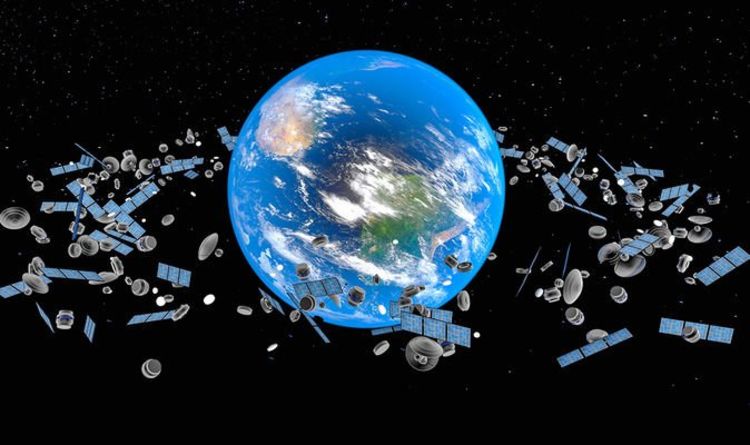As Elon Musk’s Starlink project continues its rapid expansion, the number of Starlink satellites orbiting Earth has surpassed 10,000, raising growing concerns among scientists and environmentalists. The ambitious project, operated by SpaceX, aims to provide global internet connectivity through low Earth orbit (LEO) satellites. However, experts warn that the growing satellite network poses significant risks to space sustainability and even potential damage to the planet’s ozone layer.
The Scale of Starlink’s Satellite Expansion
Since its first launch in 2019, SpaceX’s Starlink has grown at an unprecedented rate. The company’s long-term goal is to deploy up to 42,000 Starlink satellites in low Earth orbit to provide high-speed internet to remote and underserved areas around the world.
According to data from the U.S. Federal Communications Commission (FCC), Starlink currently operates more than 10,000 satellites in orbit as of October 2025, making it by far the largest satellite constellation ever built. This expansion reflects SpaceX’s dominance in the commercial satellite industry, but it also brings with it a growing set of environmental and safety challenges.
Researchers from the European Space Agency (ESA) have expressed concerns that Starlink’s exponential growth increases the probability of collisions between satellites and existing space debris. Such collisions could produce thousands of fragments, further escalating the problem of orbital congestion and making space operations riskier for other satellites and missions.
Growing Threat of Space Junk
Space junk, or orbital debris, has become one of the most pressing challenges in modern space exploration. With thousands of defunct satellites, rocket stages, and small debris pieces orbiting Earth, the risk of collision is ever-increasing. Each new Starlink satellite launch adds to this crowded environment.
A recent study published in Nature Astronomy noted that a single collision between large satellites could produce over 100,000 pieces of debris, each capable of damaging active spacecraft. Scientists refer to this potential cascade effect as the “Kessler Syndrome,” where the density of space debris becomes so high that collisions trigger an unstoppable chain reaction.
The U.S. Space Command currently tracks over 30,000 space objects larger than 10 centimeters. However, millions of smaller, untracked pieces could still cause severe damage. As more Starlink satellites enter orbit, the likelihood of such collisions rises significantly.
SpaceX has stated that Starlink satellites are equipped with autonomous collision-avoidance systems and are designed to deorbit after five years of inactivity. Yet, many experts argue that even with these safety measures, the scale of deployment remains unsustainable.
Astronomer Jonathan McDowell from the Harvard-Smithsonian Center for Astrophysics said that while the technology behind Starlink is impressive, “we are reaching a tipping point where the benefits of global connectivity could come at the cost of long-term orbital safety.”
Potential Impact on the Ozone Layer
Beyond the risk of space debris, scientists are now raising alarms about another potential environmental impact: the depletion of the ozone layer caused by satellite re-entry.
When Starlink satellites complete their operational life, they are designed to burn up upon re-entering Earth’s atmosphere. However, the burning of satellite materials, especially aluminum, releases oxides and other compounds that can interfere with the ozone layer — the protective shield that absorbs harmful ultraviolet radiation.
A report from the American Geophysical Union (AGU) in 2024 warned that large-scale satellite re-entries could release tons of aluminum oxide particles annually into the upper atmosphere. These particles have the potential to alter the chemical composition of the stratosphere, reducing the concentration of ozone.
Environmental researcher Dr. Sierra Solano stated that the issue of ozone depletion from satellite re-entry remains understudied. “We are introducing a new form of pollution that operates at altitudes far beyond our traditional understanding of environmental impact,” she said. “The effects might not be immediate, but the cumulative impact could become significant over time.”
SpaceX has maintained that Starlink satellites are designed to minimize environmental damage during re-entry, but many scientists believe that independent assessments and stricter regulations are needed before the satellite constellation expands further.
The Need for Global Space Governance
The environmental and safety challenges posed by Starlink satellites highlight the urgent need for stronger global governance in outer space activities. While several international treaties, such as the 1967 Outer Space Treaty, govern space operations, they lack modern mechanisms to manage commercial mega-constellations effectively.
The United Nations Office for Outer Space Affairs (UNOOSA) has begun discussing potential frameworks for debris mitigation and sustainable space operations. However, implementation remains slow, and individual countries often rely on national regulations that differ widely in enforcement.
Experts suggest that a new global body could be established to monitor and regulate satellite launches, ensure proper end-of-life management, and coordinate debris removal technologies. Without such coordinated governance, the race to deploy satellite constellations could lead to an unmanageable accumulation of space junk.
Balancing Connectivity and Sustainability
Despite the risks, Starlink continues to grow rapidly due to its immense potential to bridge the digital divide. Millions of users in remote regions now rely on Starlink internet for education, communication, and economic opportunity.
Governments in rural parts of Indonesia, the Philippines, and Africa have partnered with SpaceX to bring internet access to previously unreachable communities. This demonstrates the dual nature of technological progress: it brings tremendous benefits but also new environmental responsibilities.
As the world increasingly depends on satellite-based connectivity, finding a balance between innovation and sustainability becomes essential. Scientists emphasize that technological advancement must go hand in hand with environmental accountability to ensure that the sky remains safe for future generations.
Conclusion
Starlink satellites represent one of the most ambitious technological endeavors of the 21st century, transforming global communication and reshaping space economics. Yet, the massive scale of this project also poses unprecedented challenges to orbital safety and atmospheric health.
As the number of Starlink satellites in orbit continues to grow, the world faces a critical question: how can humanity expand its presence in space without compromising the planet’s safety? The answer will depend on global cooperation, transparent regulation, and responsible innovation.
Read More






 Friday, 24-10-25
Friday, 24-10-25







